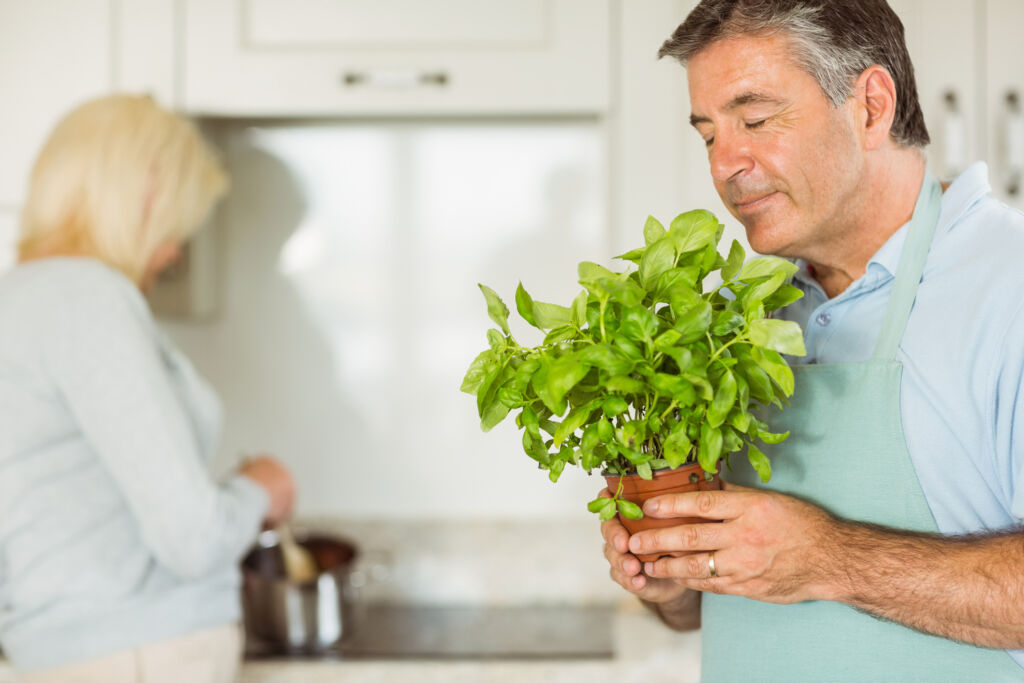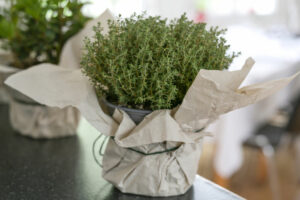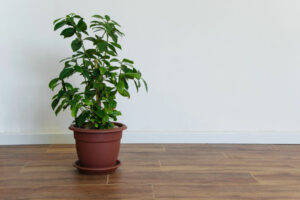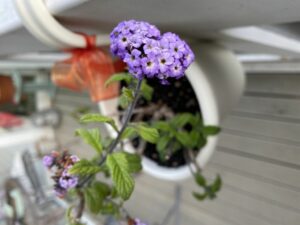HousePlantJoy is supported by our audience. When you purchase through one of our links, we may earn a small affiliate commission. As an Amazon Associate I earn from qualifying purchases. Your cost is not affected.
==================
Grow Fragrant Indoor Plants
Adding fragrant indoor plants is a great choice for homeowners. They not only decorate homes but also enhance the quality of air. Although it is natural for plants to release oxygen and purify or freshen up the air, not all are aromatic. Only some of them produce sweet-scented leaves and flowers. So having a few of these inside your house is an excellent idea.
Besides, some of the best indoor fragrant plants are easy to take care of. Also, the ones that can thrive in a house’s interior provide health benefits. Growing them under the right conditions often rewards owners with blooms and foliage. Thus, even if it takes some time, skill, and effort to care for them, they are worth looking after.
If you’re looking for some plants to make your space smell nice, here are some very good options.
Try Culinary Fragrant Indoor Plants
Oregano
Others call it Origanum Vulgare. It has a strong herbal and spicy yet cooling smell that resembles camphor. Some would say that it is minty. But that goes for its fragrance and taste. After all, it’s the kind of plant that has edible parts. Its leaves may be there providing the fragrance but its flowers are fit for consumption. Even so, it has antibacterial properties and antioxidants to fight infection and inflammation. So it’s why homes that cook Italian dishes like pizza and those who observe healthy living have it.
When this perennial herb matures, it often grows up to 2 feet tall and 18 inches wide. It usually blooms in the summertime and is hardy in zones 4 to 10. Growing it requires full sun and in an acidic or neutral kind of well-drained soil. Potting soil mixed with coarse sand or other things may be great for keeping this herb well. Even though watering it too much is an issue, it does need moist soil. Thus check its soil from time to time before watering and remember to hydrate it weekly.
Thyme
Its scientific name is Thymus Vulgaris. Usually, it grows 6 to 15 inches tall and 8 to 12 inches wide. It’s the kind of plant that produces green leaves and purple flowers. Oftentimes, it has a fine, dry, and spicy or mint scent to it that many often associate with masculinity. The smell comes from the “thymol” essential oil that comes from the plant itself. Thus, because of its aromatic nature, it belongs to the group of fragrant indoor plants too.
Its oil has excellent medicinal value since it enhances digestion and breathing. Also, it comes with healthy nutrients such as vitamin C, potassium, and magnesium. We can say that it aids in reducing swelling and improving muscles and nerves. Plus, this herb has edible leaves and sprigs for recipes. So it’s easy to see why many add this one to their homes.
It’s a very adaptable plant that also can tolerate drought. That would be because it needs plenty of sunlight and can thrive by watering it every 10 to 15 days only. Because of its hardiness in zones 5 to 9, it can withstand low temperatures. It thrives in well-draining and often neutral to alkaline soil. Like the other best fragrant houseplants, it needs to be near the windows when indoors. That would be facing south or west to get continuous sun exposure.
Go For Colorful Fragrant Indoor Plants
Gardenia
The Gardenia Jasminoides or gardenia alone is a plant with leaves all through the year. It produces flowers with white petals and yellow hues in the middle. These blooms have a strong, floral, and woody aroma. It’s no mystery why skin care products such as lotions and perfumes have them as ingredients. Their smells are so distinctive that most people are likely to identify them right away. Thus they make the best fragrant houseplants indoors.
When they are in pots, their soil needs to be moist but not soggy. Water them at the base using a hose or watering can about every week. They need to be dry before watering. Put them in acidic soil with good drainage. Still, like with other plants, they need full sun to light shade to grow. But, even if it’s good to provide them with plenty of sunlight, too much of it will burn their leaves. Such may even cause their flower buds to fall off. For that, put them beside windows to get the morning sunshine and afternoon shade.
Heliotrope
Its other names are Heliotropium and Cherry Pie Flower. It comes in varieties but most if not all are fragrant indoor plants. Heliotrope plants are annual but can be grown as perennial shrubs. With pruning and other plant care measures, they make excellent indoor foliage. For the aroma, the blooms produce powdery floral fragrances with almond-like scents. There are also hints of spicy licorice in the mix. Hence, it is not surprising why hummingbirds and butterflies find it irresistible.
Although it’s possible to grow heliotropes indoors, they need a lot of sunlight to thrive. About six hours of light and warmth throughout the day will aid in their growth. So it makes sense to place them in spaces where the sun shines. As for the soil, they need loamy ground and clay that is a bit acidic and drains well. Keeping the topsoil moist every other day helps them thrive. Yet, with the way they grow, people are saying that they are low-maintenance plants. For that, they can be awesome fragrant indoor house plants.
French Lavender
Of the different fragrant indoor plants, it’s the one that has plenty of flowers. Many are saying that its scent is delightful, with its fresh, sweet, and cool notes. Words don’t do justice to describe the smell of this plant, but it delivers a bouquet that permeates the air. Taking care of it is like adding a superb garden aroma indoors. Besides, it’s interesting to look at with its jagged leaves and purple flowers. So making it a part of your home is a wise decision.
This plant doesn’t need a lot of care and attention which makes it good for indoor decoration. Yet, even if it can thrive in a pot, it does need adequate sunlight. Like other indoor foliage, this one would be great when placed near openings or on the South side. After all, these spots are where there is usually plenty of light all through the day. Even so, this plant needs rotation for the even growth of its parts.
Pros and Cons Of Having Fragrant Indoor Plants
Their aromas are safe.
Unlike when using commercial air fresheners, plants deliver fragrance by natural means. They clean the atmosphere and also supply oxygen. Air fresheners remove bad odors but often contain toxic chemicals. Some manufacturers sell them with undisclosed ingredients and components that cause various toxicity. They often have high levels of formaldehyde, toluene, and other pernicious chemicals. So going for plants can be quite safer. It’s because of the levels of volatile organic compounds or VOCs in the oils that they have. Exposure to their essential oils is usually safe for humans.
They usually come with physical and mental health benefits.
It is common for the best fragrant houseplants to captivate the senses. Seizing the moment, when plants are around, reduces depressive moods and diminishes worries. Their presence puts the mind and body at ease. They help in controlling one’s heart rate, blood pressure, and cortisol levels. Thus they are very helpful in preventing and treating some health issues.
Plus, houseplants in general provide some form of companionship. With them around providing life to a space, they counter loneliness and isolation. They also give people purpose since fragrant indoor house plants need constant care. In looking after herbs and flowers, people allow themselves to become active too. In these ways, having sweet-smelling greenery means being healthy.
Because of their scent, they often attract some insects and animals.
Many have a natural attraction to fragrant indoor plants. Bees, wasps, moths, butterflies, and other flying insects are pollinators. Pollens attach to their body from one plant and get transferred to other plants. Birds like the hummingbirds, sunbirds, and honeycreepers do it too. It’s the same for reptiles such as sinks, geckos, and lizards. Whether they intend to pollinate or do so by accident, they draw creatures that may turn out to be pests.
Some people are allergic to these plants.
Select individuals don’t do well with the best fragrant houseplants. The pollen from the flowers or some of the essential oils from them causes allergies to occur. Aside from that, because of over-watering, small spores start to show, and molds surface too. These things also cause all types of irritations. So, before getting a few plants indoors, it would be great to research them. Try to discover which ones are less likely to cause hypersensitivity issues. It’s that or you combine them with indoor plants that filter the most common allergens.
In Conclusion
Fragrant indoor plants make magnificent additions to homes. They could make areas of a house look nicer and even smell better. Also, having aromatic greenery indoors cleans the air and helps with stress relief. So it makes sense that even offices have sweet-smelling foliage inside.
Keeping plants inside requires putting them in spaces where there is steady sunlight. But, aside from providing that, there’s the matter of soil, watering, and home design to think about. Still, there’s making choices when owning the best indoor fragrant plants. Get what you’re not allergic to and that which won’t cause you to deal with plenty of pests. Even so, go for the kind that you know you can maintain.
Have you tried using indoor plants to add fragrance to where you live? Tell us all about it by leaving a comment.








